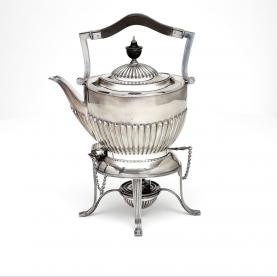Tea in the United Kingdom
Tea quickly met tremendous success in Great Britain, where it was adopted by all levels of society. As great tea-lovers, the British developed a taste for different types of tea at different times of the day and established a ‘not to be missed’ tradition of drinking ‘afternoon tea’.
Difficult beginnings
When tea arrived in Great Britain, coffee was already well established, its success assured by the popularity of coffee houses. Men would regularly spend their evenings in these establishments, to such an extent that wives began to accuse coffee of making their husbands sterile. However, a few decades later, by the early 18th century, tea had largely replaced coffee. The East India Company had, in the meantime, carried out extensive advertising campaigns, and the price of tea eventually fell. This new drink was adopted with great enthusiasm in all classes of society, in both urban and rural life.
An art of living
For a long time, tea marked different moments of the day: immediately on waking up, then with a hearty breakfast of bacon and eggs, or kippers, and so on. It was customary for the British to drink five or six cups of tea a day. The high point of the day was the traditional afternoon tea, which appeared in fashionable society around the 1840s, and was subsequently adopted by everyone, although in a simpler form. It was a convivial occasion, an opportunity to meet up with friends or family. Tea was accompanied by sweet delights and possibly savoury snacks. Decorum was very refined as silverware, a beautiful teapot and a porcelain service from China would be placed delicately on lace doilies. Needless to say, however, although modern life pays little heed to such ceremony, it lingers on as a privilege of today’s high society.
The right tea
As a nation of enlightened tea-lovers, the English drink specific types of tea at different times of the day. There are early morning teas and breakfast teas, traditionally consisting of tea from Assam and Ceylon. As the day progresses, subtler, lighter teas are preferred. For afternoon tea, a lighter Darjeeling spring tea or a jasmine tea is appropriate. In the evening, some prefer teas with less theine, such as Oolong, a semi-fermented tea that is milder than black tea. It is also recommended that a different teapot be used for each type of tea.
YiI, Sabine, JUMEAU-LAFOND, Jacques, WALSH, Michel, 1990. Le livre de l’amateur de thé. Paris : Robert Laffont.
PERRIER-ROBERT, Annie, 1999. Le thé. Paris : Éditions du Chêne - Hachette Livre.
CHA SANGMANEE, Kitti, DONZEL, Catherine, MELCHIOR-DURAND, Stéphane, STELLA, Alain, 1996. L’ABCdaire du thé. Paris : Flammarion.
BUTEL, Paul, 1989. Histoire du thé. Paris : Éditions Desjonquères.






